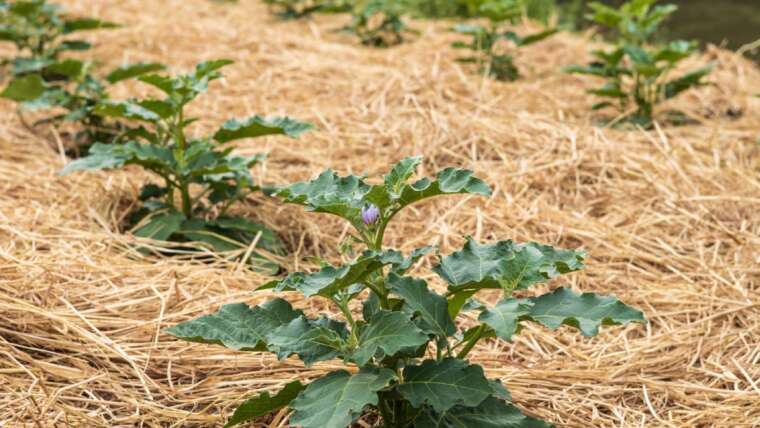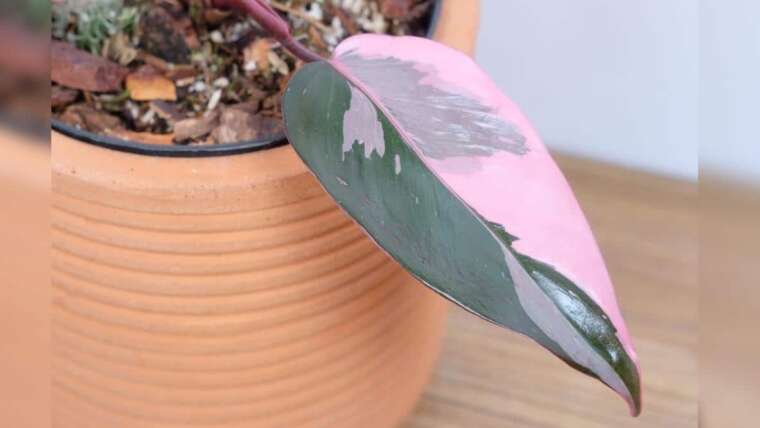Growing and harvesting your own fruit can be a wonderful and fulfilling process. Fruit trees require some tending to. While it’s not an extensive job if kept up with, the work left undone will build up over time. This makes it quite a chore to restore a tree to its former glory.
If branches become crowded in the interior of the tree, it can limit the amount of sunlight and air circulation to the inner branches. Other issues with overgrown fruit trees include a tree that is too tall to take care of. Keeping your fruit trees to a manageable height makes harvesting the fruit much easier.
Another reason you may want to prune back your fruit tree is to improve the quality of the fruit. When a tree has too many 2nd and 3rd year shoots, it will produce more fruit than the tree can support. Your tree could drop its fruit before it’s ripe, or it could produce fruit that is of subpar quality. I know that it seems counterintuitive, but more fruit isn’t always best. Quality and quantity don’t always go hand in hand.
Most fruit trees need some regular maintenance to keep them producing the best harvest. It is vital to the health of the tree and the quality of the harvest. If you’ve recently inherited some overgrown fruit trees or just got too busy to prune for a few years, that’s ok. Here are 7 steps to take to get your fruit tree back in peak condition.
Step 1: Start with the Right Tools
To prune an overgrown fruit tree, make sure to have a pruning saw, ladder, and hand shears.
Before you begin, make sure that you have the right tools for the job. Since fruit trees can grow quite large, and we are pruning one that is overgrown, a pruning saw is almost certainly in order. This will be very helpful for cutting any larger branches that need to come down.
Chances are, you will need a ladder for this job. It’s also not a bad idea to be armed with hand shears and loppers. You may encounter some smaller branches that need to be trimmed. This will be easier with shears than a larger tool.
Finally, you might consider some safety equipment for this task. Gardening gloves will help to protect your hands, particularly from thorns on a citrus tree.
Safety glasses are always a good idea when working with trimming branches overhead. Depending on the size of the tree and the branches being removed, a hard hat could come in handy.
Step 2: Make a Plan
 Assess the tree and decide which branches should be removed for its health and shape.
Assess the tree and decide which branches should be removed for its health and shape.
It doesn’t matter if you are trimming an overgrown plum tree or something tropical like a guava tree, starting with a plan is essential prior to cutting away at overgrown branches.
Before you begin cutting, take a good look at the tree from all angles and decide which branches need to be removed for the health of the tree. Also, decide which branches are interfering with the shape and overall health of the tree. Take note of crossing branches and any areas where the branches are crowded.
The ideal shape for most fruit trees is chalice-shaped or vase-shaped. The branches should arc out away from the trunk without crossing through the middle of the tree.
Consideration should also be given to the accessibility of the fruit. Consider how much work you want to put in when it’s time to harvest, and let that play a role in how large you keep your tree.
Finally, and this is the most important step of planning: Does your tree fruit on new wood or old wood? Many species of fruit tree only produce fruit on the prior year’s wood. For instance, plums, apricots, and cherries only produce fruit on wood that is from the prior year’s growth. Anything new they won’t make fruit on, and you don’t want to trim those!
Apples like 2-year-old wood or older for the best fruit; pears are similar. There are some trees that do fruit on recent growth, such as peaches and nectarines, but even then, many of them produce tastier fruit on older wood.
Before you start taking apart the tree, you’ll need to develop a plan based on your tree’s shape and its condition to ensure you leave enough old wood for good fruit development!
Step 3: Remove Dead and Diseased Wood
 Remove dead and damaged branches first to allow the plant to produce more fruit.
Remove dead and damaged branches first to allow the plant to produce more fruit.
The first cuts should be made in an effort to remove dead and damaged branches from the tree. Trimming off any damaged branches will help the plant to redirect energy away from repair and into the production of fruit.
There is an important factor that I am going to mention here, and that is you never want to remove more than 25% of the branches on a tree in one year.
The longer the tree has gone untended, the more cutting there will be. But you don’t want to stress the tree. More importantly, you don’t want a lot of new first-year growth sucking up all the nutrients that the tree should be using to produce fruit.
Armed with that knowledge, understand that bringing this tree back to peak condition could be more than just a one-time pruning. It may take an additional year before the tree is brought to a healthier state.
Step 4: Remove Suckers and Water Sprouts
 Remove suckers and water sprouts as they don’t benefit the tree and draw valuable nutrients.
Remove suckers and water sprouts as they don’t benefit the tree and draw valuable nutrients.
Identify any suckers (branches growing from the base of the tree) and water sprouts (thin branches that grow straight upward). These branches do not benefit the tree in any way. In fact, they draw nutrients and energy that would be better served elsewhere.
All of these little branches are unlikely to produce fruit. They really just get in the way and make pruning more complicated. Removing these will make your view of the tree clearer. This will make it easier to see the tree’s growth habits and get a better idea of how to balance out the main branches.
Cut these branches off as close as possible. Avoid leaving bits of the branch, as these will grow their own suckers and water sprouts, and you will be left to deal with the same issue all over again.
Cutting these off flush doesn’t ensure that there will not be new growth in these places. However, cutting them off as close as possible will be more aesthetically pleasing, and they will heal nicely.
Step 5: Remove Downward Facing and Crossing Branches
 Identify and remove branches growing downward, inward, or crossing over other branches.
Identify and remove branches growing downward, inward, or crossing over other branches.
Identify any branches that are growing downward. These will be in the shade and are unlikely to produce any fruit. They should be removed in the same way as the suckers and water sprouts.
Look at the interior of the tree and identify any places where branches either grow toward the center of the tree or cross over other branches. These branches will rub against each other, causing fruit to drop prematurely. They also inhibit sunlight and the flow of air through the center of the tree.
When a fruit tree is too crowded in the center, the fruits on those branches will not get enough sunlight. Limiting sun and air in the interior of the tree can also make it more susceptible to diseases, particularly fungal diseases.
Finally, trim off any branches that are lower than 4’ from the ground. These branches are typically thinner and more flexible. The issue with these branches is that they will droop when heavy with fruit, and you may end up with fruit resting on the ground.
Step 6: Identify the Leader
 To shape a fruit tree, consider the desired height and well-balanced tiers.
To shape a fruit tree, consider the desired height and well-balanced tiers.
The leader is the main branch, also known as the trunk of the tree. This is the branch from which all secondary branches grow. How you treat this branch will be determined by the shape you desire for your tree and whether it has grown too tall.
It is typically desirable to have well-balanced tiers to a fruit tree. This means that the leader will produce secondary branches and from the secondary branches will grow the third tier.
This is desirable because it creates a strong and balanced structure. It adds to the aesthetic nature of the tree, as well as its structural integrity.
Cutting the leader will stimulate the growth of the third-tier branches. Trim the leader about 24” above the second-tier branches.
This will keep the tree from continuing fast upward growth and will cause the tree to branch outward more, making it easier to harvest. If you would like the tree to grow taller, avoid cutting this branch.
Step 7: Choose Supporting Branches
 Choose strong branches as second-tier supports, prune weaker branches for balance, and tidy up third-tier branches.
Choose strong branches as second-tier supports, prune weaker branches for balance, and tidy up third-tier branches.
Decide which branches you would like to be your second-tier supporting branches. Because a branch of maturing fruit can become quite heavy, it is important that the main supportive branches of the tree be the strongest branches.
Too many second-tier branches will lead to a cluttered situation at the interior of the tree. Identify the strongest of the branches emerging from the leader. These will make the best second tier. Prune off any branches that are shorter and thinner than these for a nice balanced appearance.
Consider balance when pruning off secondary branches. You may decide to keep a branch that is not as strong yet, simply because it will create a nicer and more balanced shape in the long run. Vice versa, you may need to trim off a larger branch if it disturbs the balance of the tree by weighing down one side.
Your last cuts will be to clean up the second and third-tier branches. If there are a strong set of third-tier branches coming from your second tier, repeat the same process and thin out the third tier leaving the strongest branches, and creating balance.
After you have three well-balanced tiers, trim away any small branches growing from your second and third tiers. Anything thinner than a pencil should come off, as these branches may produce fruit but are unlikely to support the fruit as it matures.
Final Thoughts
When pruning an overgrown fruit tree, remember two things: first, you need to know if your tree requires old wood to produce fruit, and second, no more than 25% of the branches should be removed in any one year. This may mean coming back to the tree next year to finish the job, but it will result in a stronger tree in the long run.
If you follow these steps, you should be able to bring your fruit tree back to a well-balanced tree that produces and supports a strong and delicious harvest.




